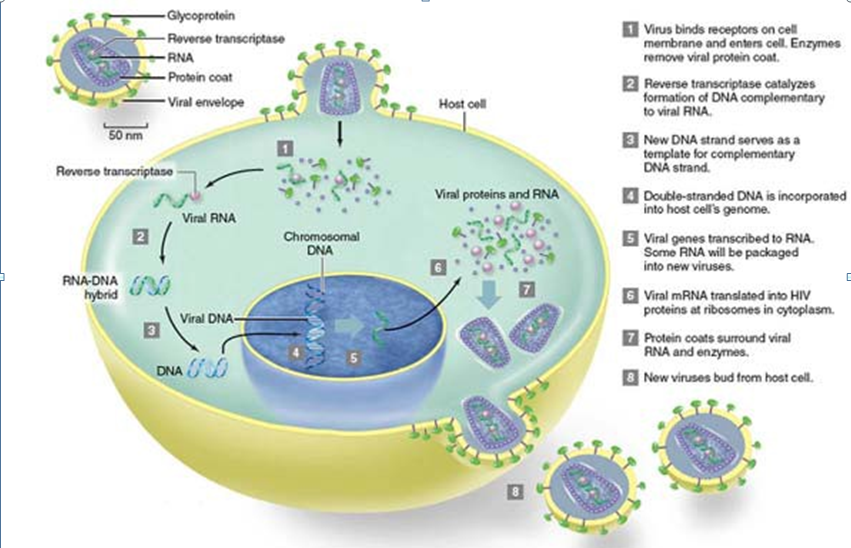The transition from transcriptional initiation to elongation involves
A) binding of sigma factor.
B) release of sigma factor.
C) release of RNA polymerase from DNA.
D) binding of RNA polymerase to DNA.
E) binding of rho factor.
B) release of sigma factor.
You might also like to view...
Mammals and birds eat more often than reptiles. Which of the following traits shared by mammals and birds best explains this habit?
A) endothermy B) ectothermy C) insulating body cover D) amniotic egg E) terrestrial
Based on the figure, which of the following is true of HIV?

A. It uses reverse transcriptase from the cell to make DNA.
B. It replicates in the nucleus of cells.
C. It contains DNA as its genetic material.
D. It is an enveloped virus.
E. It lyses cells when it is released.
You want to insert your favorite gene, which has been digested with Ncol endonuclease on both ends, into a vector. Ncol recognizes the DNA sequence C*CATGG. The vector you want to use contains many endonuclease recognition sites, but does not include an Ncol site. Which restriction endonuclease would be the most suitable replacement to digest the vector?
A. Sphl - G*CATGC B. Kpnl - GGTAC*C C. Sunl - C*GTACG D. CViAll - C*ATG
If a DNA template strand has a sequence of 3? TACAATGTAGCC 5?, the RNA produced from it will be which sequence?
A. 5?ATGTTACATCGG3? B. 3?AUGUUACAUCGG5? C. 3?TACAATGTAGCC5? D. 3?ATGTTACATCGG5? E. 5?AUGUUACAUCGG3'